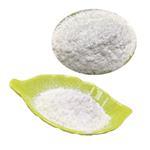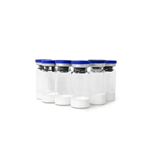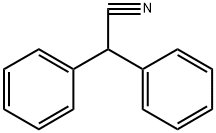Synthetic pathway of Diphenylacetonitrile
Nov 22,2023
Synthesis of Diphenylacetonitrile
Experimental procedure: In a five-liter, three-necked flask equipped with a dropping funnel whose stem extends below the surface of the liquid, a mercury-sealed stirrer and a reflux condenser protected by a calcium chloride tube is placed 441 g. (3.76 moles, 290 ml.) of benzyl cyanide. Stirring is started and the cyanide is heated to 105-110℃ by means of an oilbath. Now 608 g (3.80 moles, 195 ml) of bromine is added in the course of sixty to ninety minutes. Throughout this period the temperature is maintained within the range indicated above. The hydrogen bromide evolved may be absorbed in a water-trap. After addition is com- plete, two liters of dry benzene is added and the mixture is heated under reflux for about one hour, until virtually all the hydrogen bromide has escaped. The dropping funnel is now instantly replaced by a solid rubber stopper.

The reaction mixture is cooled to 20℃. Stirring is continued and 507 g. (3.81 moles) of powdered anhydrous aluminum chloride is added in portions in the course of about one hour with the usual precautions. The temperature in this period is maintained at 20-25. When the addition of catalyst is complete, the temperature of the mixture is slowly raised. In about tfteen minutes, when the temperature has reached 35-40, vigorous evolution of hydrogen bromide commences. Upon abatement of the reaction, the mixture is heated under reflux for sixty to ninety minutes and then cooled to room temperature. It is poured slowly and with stirring into a mixture of 1800 g of ice and 760 ml of 1 : 1 hydrochloric acid.
The layers are separated. The aqueous portion is extracted twice with 800-ml. portions of benzene. The combined benzene extracts are washed successively with one liter of water, one liter of 5% sodium carbonate and one liter of water. the bencene solution is dried over 250 g. of anhydrous sodium sulfate.
The benzene is distilled at atmospheric pressure and the residue is distilled under reduced pressure using a steamheated condenser; b. p. 160-170 (5 mm). The crude product is recrystallized from methanol (0.5 cc./g); yields of 80% pure diphenylacetonitrile).
References:
[1] DAVID. GINSBURG Manuel M B. Diphenylacetonitrile[J]. Journal of the American Chemical Society, 1949, 71 6: 2254. DOI:10.1021/ja01174a512.
- Related articles
- Related Qustion
- The synthetic methods of diphenylacetonitrile Jul 21, 2022
Diphenylacetonitrile can be used as organic synthesis intermediates for the synthesis of isocyanate, further preparation of UV coatings, PU paints, transparent elastomers and adhesives.
L-threonine is an essential amino acid important for forming proteins and enzymes in the body.....
Nov 22,2023Biochemical EngineeringPhenoxyacetic acid is a highly selective, broad-spectrum, low-dose, low-cost and safe herbicide.....
Nov 22,2023APIDiphenylacetonitrile
86-29-3You may like
Diphenylacetonitrile manufacturers
- Diphenylacetonitrile
-

- $0.00 / 25Kg/Drum
- 2024-06-03
- CAS:86-29-3
- Min. Order: 1KG
- Purity: ≥99%
- Supply Ability: 500mt/year
- Diphenylacetonitrile
-

- $1.00 / 1g
- 2024-06-03
- CAS:86-29-3
- Min. Order: 1g
- Purity: 99%
- Supply Ability: 1000kg
- Diphenylacetonitrile
-

- $10.00 / 1kg
- 2024-06-03
- CAS:86-29-3
- Min. Order: 1kg
- Purity: 99%
- Supply Ability: 600tons






